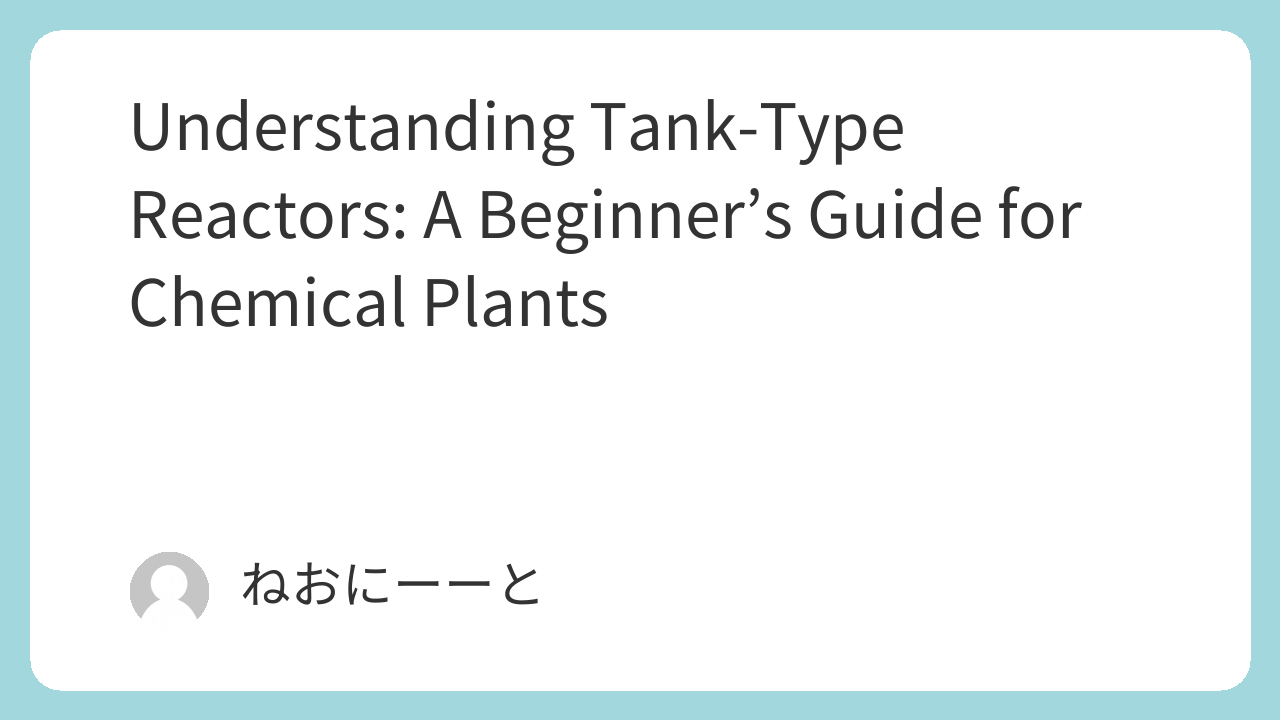Tank-type reactors are essential equipment widely used in chemical plants for various reactions. Understanding their design and structure is crucial for safe and efficient operation. For engineers, mastering reactors often means mastering the plant itself—especially in batch processes. This guide explains the basic structure, key components, and types of tank-type reactors in a way beginners can easily understand.
Overview
A tank-type reactor consists mainly of four parts:
- Vessel body
- Jacket (optional)
- Agitator
- Baffles
Without a jacket, it is simply a stirred tank. With a jacket, it functions as a reactor with temperature control.
Vessel Body
Diameter and Height:
- Critical design parameters affecting mixing efficiency and plant layout.
- Too tall: higher risk of tipping and longer agitator shafts.
- Too wide: requires more floor space and reduces mixing efficiency.
End Caps (Heads):
- Usually semi-elliptical (2:1 ratio) for strength under pressure.
- Alternative: 10% dish heads; spheres offer even higher strength.
Nozzles:
- Connect liquid lines, gas exhaust, agitators, and instruments.
- Proper orientation and number affect accessibility and operation.
Flanges:
- Vessel flange and nozzle flange.
- Vessel flange: facilitates inspection and maintenance but may reduce storage safety.
- Nozzle flange: standard for pipe connections; typically JIS10k in Japan.
Material and Thickness:
- Common: SUS304, SUS316L, Hastelloy, glass-lined, PTFE-lined.
- Choose based on pressure, temperature, mixing intensity, and jacket conditions.
Jacket
Purpose: Temperature control.
- Flow of steam for heating, cooling water for cooling.
- Jackets usually have thinner heads; SS400 steel is common.
- Inspection ports (manholes) prevent corrosion and allow maintenance.
- Baffles inside jackets prevent direct contact of high-pressure steam with vessel walls.
Agitator
Impeller Types:
- Paddle, three-blade pitched, turbine, anchor.
- Choice affects flow patterns and reaction efficiency.
- High-viscosity liquids: use anchor; simple mixing: paddle.
Shaft Design:
- Diameter must withstand torsion.
- Seals: mechanical, double mechanical, dry, or gland; choose based on pressure and leakage requirements.
Motor and Drive:
- Typically three-phase induction motor.
- Gear reducer adjusts rotation speed; inverter (VVVF) for variable speed.
- Bearings are crucial for maintenance and longevity.
Baffles:
- Improve mixing efficiency.
- May support instruments like thermometers or sampling ports.
Instruments
- Liquid level gauges (differential pressure or radar).
- Load cells for weight measurement as an alternative.
Installation
- Supported on legs or brackets.
- Strength calculation is critical, especially for leg-supported tanks.
Summary
Tank-type reactors are core equipment in chemical plants, used in many reaction processes. Understanding their basic structure and components helps engineers design, operate, and maintain reactors safely and efficiently. Use this knowledge to better manage actual units and improve plant operation.

Comments